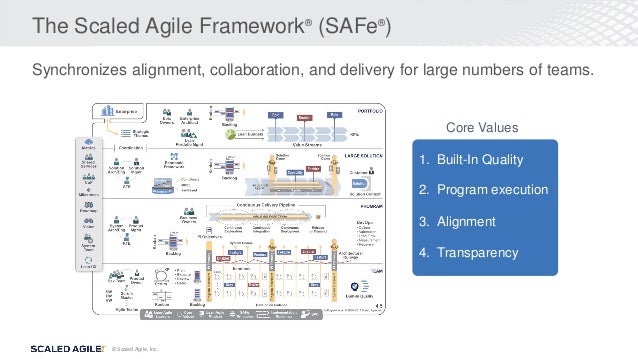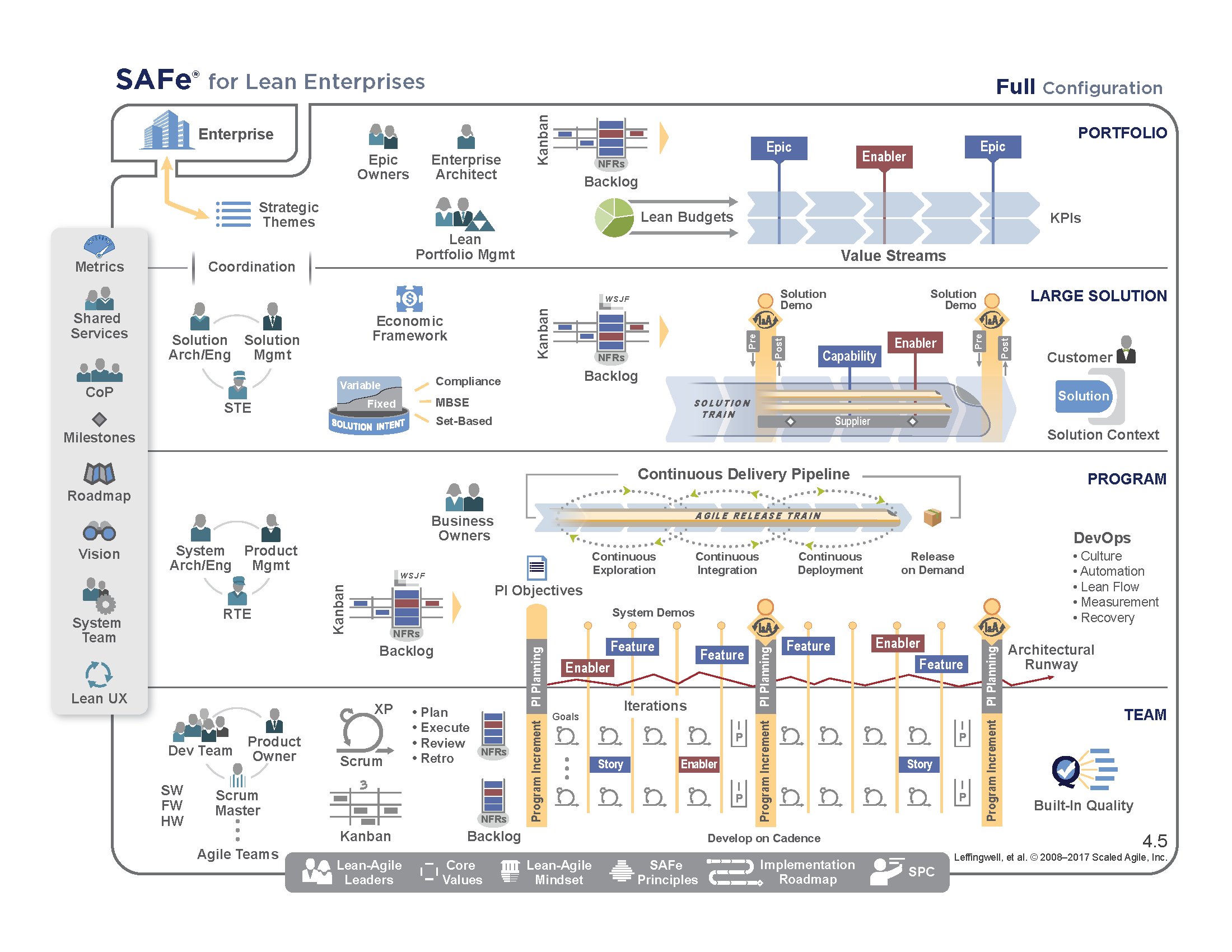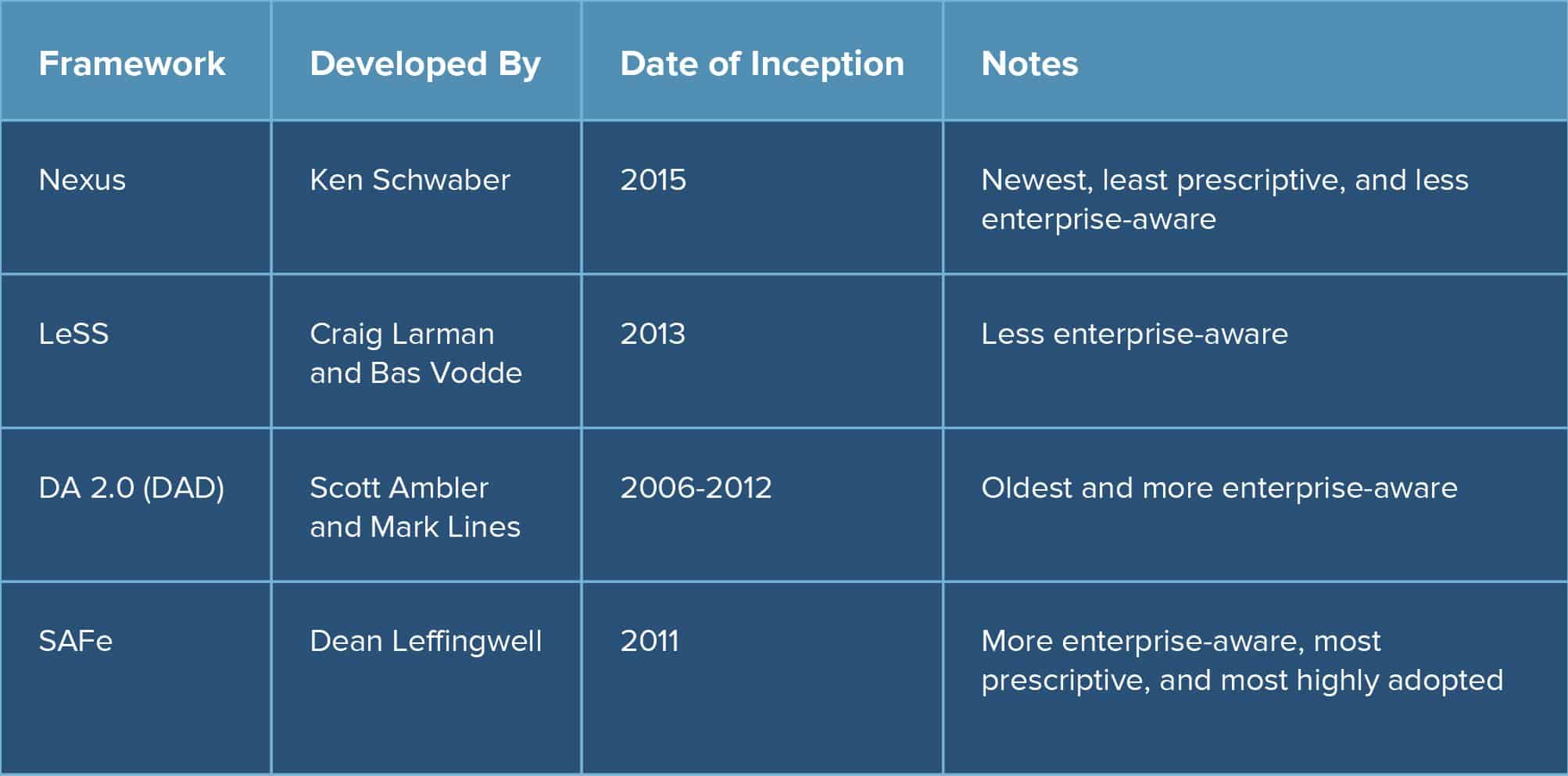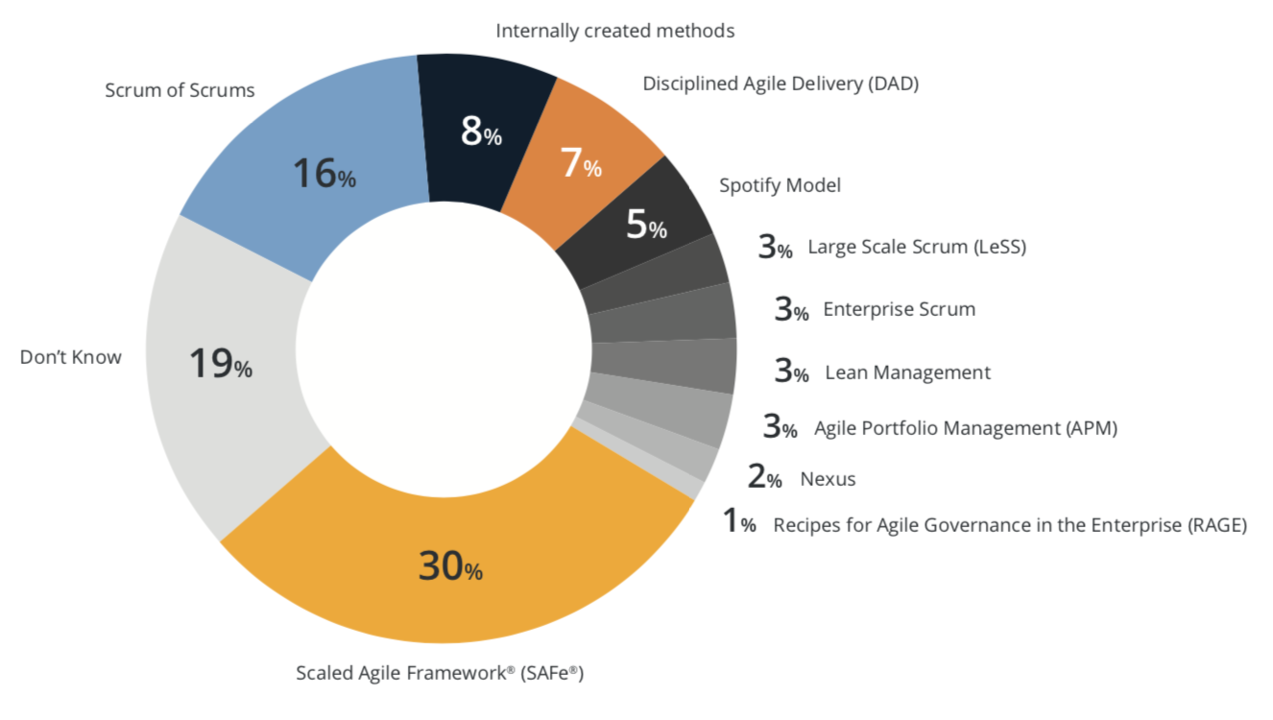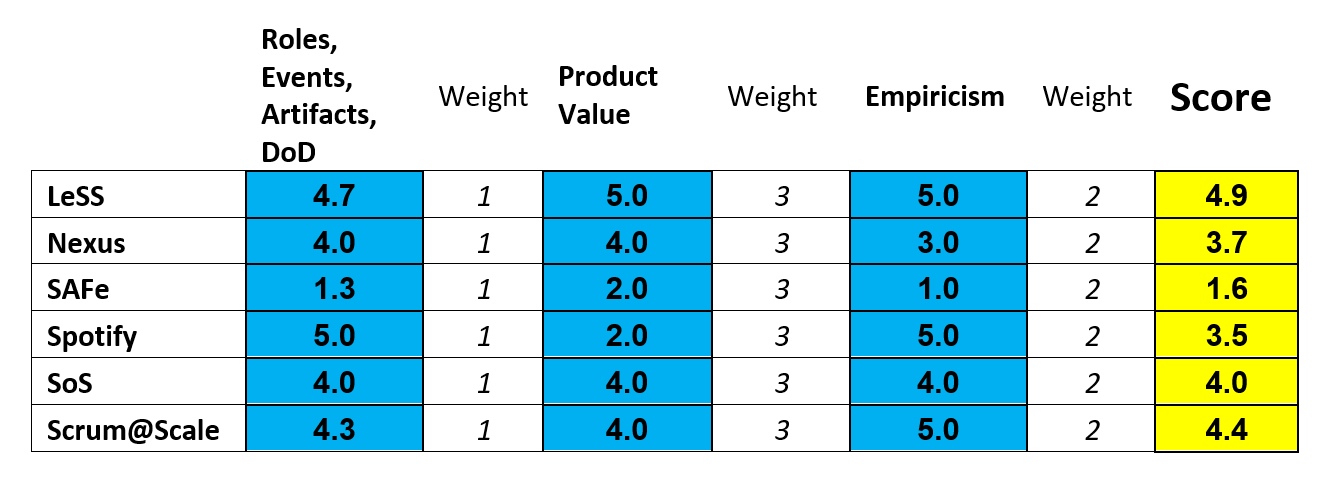What is “Agile”
It’s a set of guidelines that helps you deliver useful, valuable increments of software to customers at the end of each sprint (like two weeks). It is done by constantly re-prioritizing the backlog of requirements and reviewing incremental progress with the product owner.
What are the differences between Agile and traditional project management (Waterfall)?
Agile encourages that a little of everything, including design, development, and testing is done at the same time. Conversely, the traditional approach to projects closes and completes one phase before the next begins. Agile encourages short, frequent feedback loops and embraces changes to requirements. In Waterfall, feedback is usually not collected until the very end of the project, and changes are discouraged
When should you use Waterfall over Scrum?
Use waterfall if the requirements are simple, predictable, fully defined and understood, and will not change.
Name some other Agile frameworks.
such as Kanban, Test Driven Development, and Feature Driven Development.
What are the most important components of Agile?
Daily stand-up meetings.
CRC (Class Responsibilities and Collaborators) cards
timeboxed task boards.
TDD (Test Driven Development), Continuous Integration, regular code reviews, pair programming, automated builds, continuous deployment and delivery, etc.
You have iteration planning meetings and carry out iterative development.
How study Board can be defined in agile?
A Story Board is a visual representation of a software project’s progress. There are generally four columns ‘To do’, In Progress’, ‘Test’, and ‘Done’. Different colored post, its notes are placed in each column indicating the progress of individual development items. A story board is typically used in agile development.
What do daily stand up meetings entail?
This meeting addresses SCRUM’s three questions listed below.
– What have you completed since the last meeting?
– What do you plan to complete by the next meeting?
– What is getting in your way?
What is the Daily Stand-Up?
Every day, preferably in the morning, the team meets for no more than 15 minutes to answer three questions:
What did you do yesterday?
What do you plan on doing today?
Are there any blocks or impediments that keep you from doing your work?
This Scrum ceremony is not meant to be a status meeting for stakeholders, but a way to energize the team and get them to set focus for the day.
What is a Release candidate?
A Release candidate is a build or version of software that can be released to production.
Further, testing such as UAT may be performed on this version of the product.
What is difference between Epic, User stories & Tasks?
Epic is a group of related user stories.
User Stories define the actual business requirement. Generally created by the business owner.
Task: To accomplish the business requirements, development team create tasks.
Explain Velocity in Agile?
Velocity is a metric that is calculated by addition of all efforts estimates associated with user stories completed in one iteration. It predicts how much work Agile can complete in a sprint and how much time will it require to complete a project.
What is velocity?
Velocity is the average number of points from that past 3 – 4 sprints. It is used to help predict when backlog items will be delivered.
How the velocity of sprint is measured?
If capacity is measured as a percentage of 40 hours weeks then
completed= story points * team capacity
If capacity is measured in man hours then
completed story points / team capacity.
Have you ever tracked velocity? How would you determine a teams Sprint velocity?
Team velocity is tracked, using the number of estimated story points, over the actual completed story points.
This can be measured on the burndown chart. You can guess your team velocity overtime, from the previous sprints
Explain what is a product backlog in Scrum?
Before the scrum sprint initiates, product owner reviews the list of all new features, change requests, enhancements and bug reports and determines the priority.
What type of metrics or reports have you used?
Sprint, release burn-down and burn-up charts are standard reports
What does a scrum burn down chart comprise?
A scrum burn down chart should consist of
X-axis that displays working days
Y-axis that displays remaining effort
Ideal effort as guideline
Real progress of effort
What is a burn-down chart?
A burn-down chart displays the amount of work a team has burned through—such as hours during the sprint
What is a retrospective?
A retrospective is a meeting to inspect and adapt the process
What is Scrum Sprint?
A Scrum Sprint is a regular, repeated work cycle in scrum methodology during which work is completed and made ready for review.
Generally, scrum sprints are less than 30 days long.
Describe what happens in the Sprint planning meeting.
In Sprint planning, the Product Owner presents the goal of the sprint and discusses the high priority product backlog items. The Delivery team then chooses the amount of work for the next sprin
What are the roles in Scrum?
Scrum prescribes only three roles: the Product Owner, Scrum Master, and the Delivery Team.
These roles should ideally be cross-functional and not shared among other projects.
What is the role of the Scrum Master?
The Scrum Master serves the team and shields them from any distractions that could prevent them from completing a sprint goal.
They also remove blocks, teach the team to become self-organized and serve as a coach who teaches Agile and Scrum values and principles
How many Scrum teams have you managed at one time?
Notice the use of the word “managed” versus “led.” Scrum Masters do not manage, they lead teams.you may be required to lead more than one team
What are the artifacts of Scrum process?
Sprint backlog – The Sprint Backlog is the set of Product Backlog items selected for the Sprint, plus a plan for delivering the product Increment and realizing the Sprint Goal. The Sprint Backlog is a forecast by the Development Team about what functionality will be in the next Increment and the work needed to deliver that functionality into a “Done” Increment
Product backlog – The Product Backlog is an ordered list of everything that might be needed in the product and is the single source of requirements for any changes to be made to the product. The Product Owner is responsible for the Product Backlog, including its content, availability, and ordering.
Velocity chart- A velocity chart shows the sum of estimates of the work delivered across all iterations
Burn-down chart – It is a chart that shows how quickly you and your team are burning through your customer’s user stories. It shows the total effort against the amount of work we deliver on each iteration.
https://intellipaat.com/interview-question/agile-scrum-master-interview-questions/
https://www.glassdoor.com/Interview/us-project-manager-scrum-master-interview-questions-SRCH_IL.0,2_IN1_KO3,31.htm
https://easybacklog.com/
https://www.simplilearn.com/agile-scrum-master-interview-questions-article
- What is Kanban?
Kanban is a method for managing the creation of products with an emphasis on continual delivery while not overburdening the development team. Like Scrum, Kanban is a process designed to help teams work together more effectively.
Kanban is based on 3 basic principles:
Visualize what you do today (workflow): seeing all the items in context of each other can be very informative
Limit the amount of work in progress (WIP): this helps balance the flow-based approach so teams don€™t start and commit to too much work at once
Enhance flow: when something is finished, the next highest thing from the backlog is pulled into play
https://www.versionone.com/what-is-kanban/
